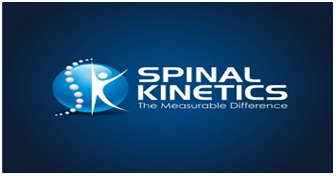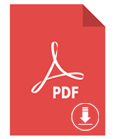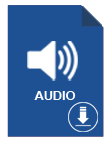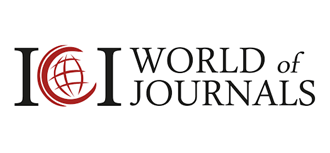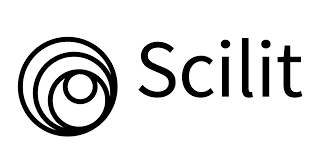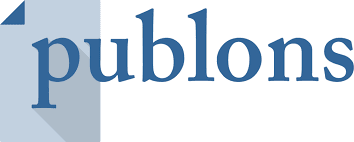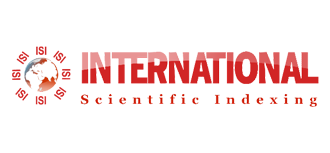Abstract
Background information: Onychomycosis is a prevalent and persistent fungal infection of the nails, primarily caused by Trichophyton rubrum, posing therapeutic challenges due to poor drug penetration and high relapse rates. While oral antifungals like terbinafine remain effective, topical alternatives and physical adjuncts such as laser therapy are being explored to enhance efficacy and safety.
Objective: This randomized prospective assessor-blinded clinical trial aimed to evaluate the efficacy of combining 980 nm diode laser therapy with a terbinafine nail lacquier formulated in a hydro-alcoholic solution of hydroxy-propyl chitosan (Onicoter, Cantabria Labs Difa Cooper) compared to laser therapy alone in the treatment of mild-to-moderate onychomycosis.
Methods: A total of 111 patients were randomized in a 1:2 ratio to receive either laser therapy alone (Group A, n=37) or laser therapy followed by topical terbinafine nail lacquer application (Group B, n=74). Laser treatment was administered weekly for three sessions, followed in Group B by daily lacquer application for four weeks and weekly thereafter for six months. Clinical parameters—nail involvement area, dyschromia, and dystrophy—were assessed at baseline (V0), post-laser (V2), six months (V3), and twelve months (V4). Statistical significance was determined using Welch’s t-test (p < 0.05).
Results: Both groups exhibited progressive clinical improvement. While reduction in nail involvement area was observed in both arms, no statistically significant differences were found between groups. However, at V4, Group B demonstrated significantly greater improvements in nail dystrophy and dyschromia compared to Group A (p < 0.05), supporting the added benefit of the lacquer.
Conclusion: The sequential combination of diode laser therapy and terbinafine nail lacquier formulated in a hydro-alcoholic solution of hydroxy-propyl chitosan is more effective than laser therapy alone in improving nail dyschromia and dystrophy in onychomycosis. This dual approach offers a promising, well-tolerated alternative to systemic antifungal regimens, potentially improving patient outcomes and adherence.
Keywords:Dermatophyte nail infections; Lacquer Terbinafine; Scopulariopsis; Chronic onycholysis
Introduction
Dermatophyte nail infections, also known as onychomycoses, are among the most common infections affecting humans, with a worldwide prevalence of 5.5% [1]. These infections primarily involve toenails and fingernails, leading to significant discomfort, cosmetic concerns, and sometimes functional impairment. Among the onychomycoses, most of them are caused by species of the genus Trichophyton, especially Trichophyton rubrum, which accounts for over 80% of cases in some regions [2-6]. Other causes of nail infection include: yeast (such as Candida species), especially in people with chronic onycholysis [7-9]; Non-dermatophyte molds (for instance, Scopulariopsis, Aspergillus, Fusarium, Scytalidium) that can infect damaged nails or act as secondary invaders [7-10]; Bacteria, can infect the nails especially after a trauma or in the presence of artificial nails or nail polish, which can harbor microorganisms; Viruses (such as those causing herpetic whitlow), can infect the nail area, sometimes mimicking bacterial abscesses [11]. What emerges from literature data is that several risk factors determine the onset of onychomycoses among the population. Those risk factors include: advancing age [12,13], nail trauma [14], history of tinea pedis infection [15,16], and comorbidities such as diabetes [17], immunosuppression [18-20], obesity [21,22] and the presence of malignancies [23]. Onychomycoses often lead to visible changes in the nails of the patient, in terms of color (dyschromia) and structure (dystrophia). Depending on the cause of the infection, nails can turn their natural color into a non-physiological one (yellow, brown and white often in case of fungal infection, while bacterial infections may lead to greenish or black hues) [24-28]. We can assist also at the presence of melanonychia (dark streaks), leukonychia (white spots), and blue chromonychia (blue nails), that are specific typers of dyschromia observed in various nail disorders including infections [29,30].
With the term “nail dystrophia” we refer to an abnormality of the nail in terms of growth and structure. Common dystrophic changes include: thickening or thinning in the nail plate, pitting, ridging or splitting (onychorrhexis, onychoschizia), loss of luster and opalescence, onycholysis (separation of the nail from the nail bed), Beau’s lines (trasverse grooves), onychomadesis (shedding of the nail) and koilonychia (spoon-shaped nail) [31-34], that in case of severe infection could lead to the complete destruction or loss of the nail in some cases [29,35]. Nail infections are very common among the population, particularly onychomycosis, and can be very persistent and difficult to treat. The management of it involves antifungal medications, with both oral and topical drugs available, as well as preventive strategies to reduce recurrencies. Among the oral antifungal medications, the most widely used are terbinafine and itraconazole. Terbinafine is generally considered the first-line therapy due to its higher cure rates (70-80%) and favorable safety and cost profiles [36-39]. Terbinafine is an antifungal medication, especially effective against dermatophytes infection (such as onychomycoses). The mechanism of action of terbinafine on dermatophytes is based on the inhibition of an enzyme called squalene epoxidase, which is crucial for the fungal cell membrane synthesis. The blockage of this enzyme leads to an accumulation of squalene at the level of the cell membrane of the dermatophyte. Terbinafine targets fungal squalene epoxidase much more strongly than the human version of it, so, it does not affect human cholesterol synthesis at therapeutic doses [40]. In addition, terbinafine induces a deficiency of ergosterol, an essential component of the fungal cell membrane. Without ergosterol, the cel membrane of the fungal cell becomes dysfunctional leading to cell death. The combined effect of toxic squalene buildup and lack of ergosterol disrupts membrane function and cell wall synthesis, making terbinafine primarily fungicidal (it kills fungi rather than just stopping their growth) [41-43]. Terbinafine is also able to induce the formation of reactive oxygen species (ROS) within fungal cells, particularly in the mitochondria, causing oxidative stress able to further damage the fungal cell membranes and contribute to the antifungal effect [44].
In the last years topical terbinafine-based polishes and solutions are being developed as alternative to the oral therapy for onychomycoses, going to deliver terbinafine directly at the site of the infection, minimizing systemic side effects and improving its safety. Terbinafine is included in different kind of formulations and different delivery systems, such as, lacquers, gels, liposomes, and nano-formulations, all designed to enhance drug penetration through the thickened nail plate barrier [45-48]. An emerging strategy to improve the treatment of onychomycoses is the encapsulation of terbinafine in chitosan-based carriers to enhance drug delivery through the nail, to increase drug stability and uptake. The encapsulation of terbinafine in chitosan-based hydrogels or nanoparticles increases its solubility in water and prevents drug leakage, which is crucial for effective topical delivery [49,50]. In addition, chitosan-based carriers have been demonstrated to enhance nail penetration [50], to grant a controlled drug release, maintaining effective concentrations over time and potentially reducing dosing frequency and to increase biocompatibility, showing good compatibility with human tissues and low toxicity [49]. The in vitro and in vivo efficacy of chitosan-encapsulated terbinafine hydrogels and gels effectively inhibit fungal growth, including common pathogens responsible for onychomycosis. On the other hand, some hydrogels are self-repairing and responsive to acidic pH, which may further enhance their performance in the nail environment.
Among the standard treatments, laser therapy has recently been emerging as a promising option. Thanks to the ability to selectively target fungal cells within the nail, lasers inhibit or destroy the fungi and improve nail appearance. Lasers exert their anti-fungal action through two different mechanisms of action:
• Thermal effect: Lasers such as Nd: YAG (1064-nm) and fractional CO₂ lasers emit energy that penetrates the nail plate, generating heat that damages or kills fungal cells while sparing surrounding tissue [51-54].
• Enhanced drug delivery: lasers can create micro-channels in the nails, improving topical drug penetration increasing their effectiveness [54,55].
Laser’s treatments are generally safe, with mild and tolerable side effects such as the transient burning or mild pain [56-59]. The use of lasers as a monotherapy demonstrated to lead to clinical improvement and an increased clear nail growth, but still, cure rates are generally lower than with oral anti-fungi. This is the reason why lasers are FDA-approved for the temporary improvement in nail clarity, but not as a definitive cure [60-62]. Evidence shows that laser monotherapy generally results in modest mycological cure rates, often lower than those achieved with standard oral antifungals. Mycological cure rates with laser monotherapy range widely, from 11-13% in some studies to as high as 80% in others, depending on the laser type, and treatment protocol [63-65]. The parameters used, such as fluence, pulse rate, and session number, influence the outcome of the therapy, and the wide variation of them makes cross-study comparisons very difficult. A critical review found that 60% of studies reported achieving complete cure in at least 50% of treated patients, but methodologies and definitions of “cure” varied widely, making direct comparison difficult. Most of these studies used the Nd: YAG laser, with a significant proportion reporting positive responses, but consistent, high cure rates at 12 months are not well established [66]. Studies show that laser monotherapy often fails to achieve complete or lasting mycological cure. Some patients may see temporary improvement in nail appearance, but this does not persist, and the underlying infection often remains. In addition, even when an initial improvement is seen, relapses are common, and most patients do not achieve sustained clearance of the fungus [67,68]. The purpose of this randomized prospective assessor-blind clinical trial is to analyze the efficacy of the combined use of a lacquer containing 78.22 mg/ml of erbinafine nail lacquier formulated in a hydro-alcoholic solution of hydroxy-propyl chitosan and diode laser (wavelength 980nm), to treat onychomycoses.
Materials and Methods
Patients
A total of 111 subjects were enrolled for this trial. Each subject provided a signed informed consent prior to receiving any trial-related treatment. Were considered for the study both, men and women, over 18 years old with a mild to moderate fungal infection of the nail with an affected nail area inferior to the 75% of the total nail area. Patients were excluded from the study if they had more than three nails affected by fungal infection, presented with sensory neuropathy, were suffering from an acute inflammatory syndrome, were pregnant or lactating, or had used antifungal drugs within six months prior to enrollment.
Study Design
This study was a multi-center, randomized, assessor-blind clinical trial, conducted in accordance with the principles of the Helsinki Declaration and current GCP guidelines. The subjects were randomly sorted into two treatment groups: Group A, were patients undergoing a once per week laser therapy using a 980 nm diode laser (Eufoton), employed with a defocused handpiece and a 5 mm flat lens spacer. The laser-program settings were flat-lens handpiece (5 mm diameter), emission for 90 seconds per nail plate, power set at 2 W, for 3 weeks, and Group B, whom patients undergoing the same therapy as Group A, followed by one month of daily application of Onicoter and the following five months of weekly application (Figure 1).

Effectiveness Assessment
The treatment outcomes were assessed over the course of four clinical visits. At baseline (V0), initial parameters were evaluated. Following the completion of laser therapy, patients were randomized into one of the two study groups at visit V2. At visit V3 (six months after V2) patients were re-evaluated using the same parameters assessed at baseline. The final assessment occurred at visit V4 (six months after V3), to determine long-term treatment outcomes. The parameters assessed included the extent of the affected nail area, the degree of dyschromia, and the degree of dystrophy. These parameters were recorded at each timepoint to monitor any changes during the treatment period and at follow-up, 12 months after baseline (V4).
Statistical Analysis
Statistical analyses were conducted using GraphPad Prism version 9.0 (GraphPad Software Inc., La Jolla, CA, USA).
Instrumental data is submitted to Welch’s T-Test, which accounts for potential differences in variance and sample size. Data are expressed as mean ± Standard Deviation (SD), a p-value < 0.05 was considered statistically significant.
Results
This randomized prospective assessor-blind clinical trial was conducted between September 2022 and January 2025 in accordance with the Declaration of Helsinki and Good Clinical Practice (GCP) guidelines. A total of 111 participants were enrolled and randomized into two groups in a 1:2 ratio: Group A (37 subjects) and Group B (74 subjects). The number of participants at the V2 timepoint decreased respectively to 35 subjects for group A and 69 subjects for Group B. During subsequent visits, a progressive decrease was observed. At V3, Group A included 26 participants (a decrease of 25.7%) and Group B 60 participants (a decrease of 13.0%). By the V4 visit, the total number of participants had decreased to 48: 15 in Group A (a further decrease of 42.3% from V3, and 57.1% from baseline) and 33 in Group B (a decrease of 45.0% from V3, and 52.2% from baseline). The analyzed parameters were the percentage of the involved nail plate, the level of dyschromia and the level of dystrophia. We could observe a decrease in the percentage of the nail area involved in both experimental groups during the time (Figure 2), but there is no statistical valid difference in this parameter between the two groups. At V4 it is possible to observe a positive trend of patients belonging to Group B (Laser + Onicoter) to have a reduced involved nail area compared to Group A patients. The second parameter considered was the level of nail dystrophy. A consistent reduction in this parameter was observed over the course of the study. However, no statistically significant differences were found between the two groups at Baseline, V2, or V3. At timepoint V4, a statistically significant difference emerged between the two groups, with patients in Group B showing a marked reduction in nail dystrophy compared to Group A (Figure 3). The third parameter assessed was nail dyschromia. Both groups showed a gradual reduction over time, with no statistically significant differences observed at Baseline, V2, or V3. However, by V4, Group B exhibited a significantly greater improvement compared to Group A (Figure 4).



Discussion
Onychomycoses are among the most common nail disorders in humans, with a global prevalence estimated at 5.5%[1]. These infections, primarily caused by dermatophytes-particularly Trichophyton rubrum-can lead to progressive nail discoloration (dyschromia), dystrophy, discomfort, and functional impairment. Management remains challenging due to the nail’s poor permeability, high recurrence rates, and prolonged treatment durations. As such, there is growing interest in combining drug delivery innovations with adjunctive physical therapies to enhance treatment efficacy and patient adherence. This study aimed to evaluate the clinical efficacy of a novel combination therapy-terbinafine nail lacquier formulated in a hydro-alcoholic solution of hydroxy-propyl chitosan Cantabria Labs Difa Cooper as an adjuvant to 980 nm diode laser therapy-in the management of onychomycosis. The rationale behind this approach stems from the need to improve drug delivery across the nail plate and enhance therapeutic outcomes while minimizing systemic exposure and side effects. Our findings indicate that the combined treatment resulted in a greater reduction in fungal burden and more pronounced nail clarity improvement compared to monotherapy, supporting a synergistic effect between laser therapy and topical terbinafine-chitosan formulation. We could observe a strong reduction in Group B (Laser therapy + Onicoter) at the follow-up (V4) in two out of the three considered parameters, dystrophia and dyschromia. The adjunctive use of diode lasers further contributed to the clinical outcome, likely through both direct thermal effects on fungal structures and enhanced drug delivery. The 980 nm wavelength has been shown to penetrate effectively through the nail plate, achieving localized hyperthermia that can denature fungal proteins and impair cell integrity. Moreover, laser-induced microchannels may transiently increase the permeability of the nail, further facilitating the diffusion of terbinafine into infected tissues. This dual mechanism could explain the superior response observed in patients receiving combination therapy.
One of the advantages of the terbinafine-based nail lacquer is the vehicle used, the hydroxypropyl-chitosan (HPCH). It has been already demonstrated that HPCH increase the permeation of antifungal agents through the keratinized nail plate, allowing more of the active drug to reach the site of infection [69,70]. In addition, it has been demonstrated that HPCH improve nail hydration, facilitating drug absorption and effectiveness [70], it forms a protective film over the nail, shielding it forms further microbial attack and physical damage [69], and increase the stability and the prolonged release of the terbinafine, maintaining effective concentrations over the time [70]. It was also demonstrated that HPCH influence dyschromia and dystrophia of the nail, in fact, treatments with HPCH-based lacquer led to a significant decrease in nail discoloration, as measured by the Onychodystrophy Global Severity Score (OGSS), which specifically assesses dyschromia among other symptoms and it also resulted in marked improvement in nail dystrophy, including reduced splitting and pitting [71], data that are consistent with the clinical trial we performed. Importantly, no systemic side effects were noted, consistent with the localized nature of both the topical antifungal and laser interventions. This represents a significant advantage over oral terbinafine, which, while effective, is associated with potential hepatotoxicity and drug-drug interactions, especially in elderly or poly-medicated patients. Despite the promising outcomes, some limitations should be acknowledged. The study population, although diverse, was limited in size and follow-up duration. This constant decrease in participant numbers over time could be attributed to the efficacy of the treatments, which may have led to early resolution of symptoms and, consequently, discontinuation of follow-up. Given the notoriously slow growth rate of nails, a longer observation period would be beneficial to assess recurrence rates and long-term cure. Moreover, while our assessor-blinded design reduces bias, future studies with a double-blind, placebo-controlled structure would strengthen the evidence base.
Conclusion
The combination of diode 980nm laser therapy and Hydroxy-propyl chitosan terbinafine nail laquer represents a promising therapeutic strategy for the treatment of onychomycosis. The results of this clinical trial offer a new opportunity to improve the quality of life of the patients who suffer from onychomycoses to reach a better result in a shortened time. By exploiting both the pharmacological potency of terbinafine and the biophysical advantages of laser therapy, this dual approach may offer a safer, more effective, and patient-friendly alternative to conventional regimens.
- Lipner SR, Scher RK (2019) Onychomycosis: Clinical overview and diagnosis. Journal of the American Academy of Dermatology 80(4): 835-851.
- Phan KL, Chandler D (2024) O07 Clinical and mycological profile of dermatophyte infections in England. British Journal of Dermatology. Published online.
- Martinez-Rossi N, Peres NT, Bitencourt T, Martins MP, Rossi A (2021) State-of-the-Art Dermatophyte Infections: Epidemiology Aspects, Pathophysiology, and Resistance Mechanisms. Journal of Fungi 7(8): 629.
- Chanyachailert P, Leeyaphan C, Bunyaratavej S (2023) Cutaneous Fungal Infections Caused by Dermatophytes and Non-Dermatophytes: An Updated Comprehensive Review of Epidemiology, Clinical Presentations, and Diagnostic Testing. Journal of Fungi 9(6): 669.
- Colosi I, Cognet O, Colosi H, Sabou M, Costache C (2020) Dermatophytes and Dermatophytosis in Cluj-Napoca, Romania—A 4-Year Cross-Sectional Study. Journal of Fungi 6(3): 154.
- Connie F Cañete-Gibas, James Mele, Hoja P Patterson, Carmita J Sanders, Dora Ferrer, et al. (2023) Terbinafine-Resistant Dermatophytes and the Presence of Trichophyton indotineae in North America. Journal of Clinical Microbiology 61(8): e0056223.
- Midgley G, Moore M, Cook JC, Phan QG (1994) Mycology of nail disorders. Journal of the American Academy of Dermatology 31(3 Pt 2): 68-74.
- Piraccini B, Alessandrini A (2015) Onychomycosis: A Review. Journal of Fungi 1(1): 30-43.
- Haneke E (1990) Fungal infections of the nail. Seminars in dermatology 10(1): 41-53.
- Moreno G, Arenas R (2010) Other fungi causing onychomycosis. Clinics in dermatology 28(2): 160-163.
- Iorizzo M, Pasch M (2022) Bacterial and viral infections of the nail unit: tips for diagnosis and management. Hand surgery & rehabilitation. Published online.
- Elewski BE, Charif MA (1997) Prevalence of onychomycosis in patients attending a dermatology clinic in northeastern Ohio for other conditions. Arch Dermatol 133(9): 1172-1173.
- Polat M, İlhan MN (2015) Dermatological Complaints of the Elderly Attending a Dermatology Outpatient Clinic in Turkey: A Prospective Study over a One-year Period. Acta Dermatovenerol Croat 23(4): 277-281.
- Walling HW, Sniezek PJ (2007) Distribution of toenail dystrophy predicts histologic diagnosis of onychomycosis. Journal of the American Academy of Dermatology 56(6): 945-948.
- Piérard G (2001) Onychomycosis and other superficial fungal infections of the foot in the elderly: a pan-European survey. Dermatology 202(3): 220-224.
- Sigurgeirsson B, Steingrímsson O (2004) Risk factors associated with onychomycosis. J Eur Acad Dermatol Venereol 18(1): 48-51.
- AK Gupta, P Taborda, V Taborda, J Gilmour, A Rachlis, et al. (2000) Epidemiology and prevalence of onychomycosis in HIV-positive individuals. Int J Dermatol 39(10): 746-753.
- García-Romero MT, Aguilar EL, Arenas R (2014) Onychomycosis in Immunosuppressed Children Receiving Chemotherapy. Pediatric Dermatology 31(5): 618-620.
- Gupta Ak, Daigle D, Foley KA (2015) The prevalence of culture-confirmed toenail onychomycosis in at-risk patient populations. Journal of the European Academy of Dermatology and Venereology 29(6): 1039-1044.
- Elewski BE, Tosti A (2015) Risk Factors and Comorbidities for Onychomycosis: Implications for Treatment with Topical Therapy. J Clin Aesthet Dermatol 8(11): 38-42.
- Michael Kam Tim Chan, Lai-Yin Chong; Achilles Project Working Group in Hong Kong (2002) A Prospective Epidemiologic Survey on the Prevalence of Foot Disease in Hong Kong J Am Podiatr Med Assoc 92(8): 450-456.
- Tosti A, Hay R, Arenas-Guzmán R (2005) Patients at risk of onychomycosis--risk factor identification and active prevention. J Eur Acad Dermatol Venereol 19(Suppl 1): 13-16.
- Lee DK, Lipner S (2022) Optimal diagnosis and management of common nail disorders. Annals of Medicine 54(1): 694-712.
- Jeanmougin M, Civatte J (1983) Nail Dyschromia. International Journal of Dermatology 22(5): 279-290.
- Arias AM, Yung C, Rendler S, Soltani K, Lorincz A (1982) Familial severe twenty-nail dystrophy. Journal of the American Academy of Dermatology 7(3): 349-352.
- Lalitha C, Shwetha S, Asha GS (2021) Assessment of clinical and etiological factors in nail dyschromias. IP Indian Journal of Clinical and Experimental Dermatology 7(4): 324-330.
- Mendiratta V, Jain A (2011) Nail dyschromias. Indian journal of dermatology, venereology and leprology 77(6): 652-658.
- Arias AM, Yung C, Rendler S, Soltani K, Lorincz A (1982) Familial severe twenty-nail dystrophy. Journal of the American Academy of Dermatology 7(3): 349-352.
- Bodman M (2004) Nail dystrophies. Clinics in podiatric medicine and surgery 21(4): 663-687.
- Lorenzi C de, Abosaleh M, Boehncke W (2017) [Nail changes: diagnostic considerations in everyday medical general practice]. Revue medicale Suisse 13(556): 691-696.
- Arias AM, Yung C, Rendler S, Soltani K, Lorincz A (1982) Familial severe twenty-nail dystrophy. Journal of the American Academy of Dermatology 7(3): 349-352.
- Bodman M (2004) Nail dystrophies. Clinics in podiatric medicine and surgery 21(4): 663-687.
- Gupta AK, Talukder M, Venkataraman M (2021) Review of the alternative therapies for onychomycosis and superficial fungal infections: posaconazole, fosravuconazole, voriconazole, oteseconazole. International Journal of Dermatology 61(12): 1431-1441.
- AK Gupta, N Stec, RC Summerbell, NH Shear, V Piguet, et al. (2020) Onychomycosis: a review. Journal of the European Academy of Dermatology and Venereology 34(9): 1972-1990.
- Alexander KC Leung, Joseph M Lam, Kin F Leong, Kam L Hon, Benjamin Barankin, et al. (2019) Onychomycosis: An Updated Review. Inflammation & Allergy Drug Targets 14(1): 32-45.
- Roberts (1999) Onychomycosis: current treatment and future challenges. British Journal of Dermatology 141(Suppl 56):1-4.
- Ryder NS (1992) Terbinafine: Mode of action and properties of the squalene epoxidase inhibition. British Journal of Dermatology 126(Suppl 39): 2-7.
- Mijaljica D, Spada F, Harrison IP (2022) Emerging Trends in the Use of Topical Antifungal-Corticosteroid Combinations. Journal of Fungi 8(8): 812.
- Roberts D (1997) Oral terbinafine (Lamisil) in the treatment of fungal infections of the skin and nails. Dermatology 194 (Suppl 1): 37-39.
- Shekhova E, Kniemeyer O, Brakhage A (2017) Induction of Mitochondrial Reactive Oxygen Species Production by Itraconazole, Terbinafine, and Amphotericin B as a Mode of Action against Aspergillus fumigatus. Antimicrobial Agents and Chemotherapy 61(11): e00978-17.
- Sigurgeirsson B, Ghannoum M (2012) Therapeutic potential of TDT 067 (terbinafine in Transfersome®): a carrier-based dosage form of terbinafine for onychomycosis. Expert Opinion on Investigational Drugs 21(10): 1549-1562.
- Tanrıverdi ST, Özer Ö (2013) Novel topical formulations of Terbinafine-HCl for treatment of onychomycosis. European journal of pharmaceutical sciences: official journal of the European Federation for Pharmaceutical Sciences 48(4-5): 628-636.
- Rainard Fuhr, David Cook, John Ridden, Kerry Nield, Emma Leigh, et al. (2022) Results from a Phase 1/2 trial of BB2603, a terbinafine‐based topical nano‐formulation, in onychomycosis and tinea pedis. Mycoses 65(6): 661-669.
- Gupta AK, Paquet M (2015) Management of Onychomycosis in Canada in 2014. Journal of Cutaneous Medicine and Surgery 19(3): 260-273.
- Chengzhi Liu, Yawen Zhong, Yifei Xiang, Lanqian Qin, Jiada Li, et al. (2025) Octyl succinic anhydride-modified chitosan/oxidized sodium alginate Schiff base hydrogel loaded with terbinafine hydrochloride: pH-responsive, self-repairing, antifungal properties. International journal of biological macromolecules. 301: 140431.
- Kamran Hidayat Ullah, Faisal Rasheed, Iffat Naz, Naveed Ul Haq, Humaira Fatima, et al. (2022) Chitosan Nanoparticles Loaded Poloxamer 407 Gel for Transungual Delivery of Terbinafine HCl. Pharmaceutics 14(11): 2353.
- Francuzik W, Fritz K, Sălăvăstru C (2016) Laser therapies for onychomycosis – critical evaluation of methods and effectiveness. Journal of the European Academy of Dermatology and Venereology 30(6): 936-942.
- Bhatta A, Keyal U, Wang X, Gellén E (2017) A review of the mechanism of action of lasers and photodynamic therapy for onychomycosis. Lasers in Medical Science 32(2): 469-474.
- Zhang RN, Wang D kun, Zhuo F, Duan X han, Zhang X yan, Zhao JY (2012) Long-pulse Nd: YAG 1064-nm laser treatment for onychomycosis. Chinese medical journal 125(18): 3288-3291.
- Zhang J, Lin P, Li J, Guo C, Zhai JB, Zhang Y (2022) Efficacy of laser therapy combined with topical antifungal agents for onychomycosis: a systematic review and meta-analysis of randomised controlled trials. Lasers in Medical Science 37: 2557-2569.
- Bhatta A, Keyal U, Huang X, Zhao J (2016) Fractional carbon-dioxide (CO2) laser-assisted topical therapy for the treatment of onychomycosis. Journal of the American Academy of Dermatology 74(5): 916-923.
- Francuzik W, Fritz K, Sălăvăstru C (2016) Laser therapies for onychomycosis – critical evaluation of methods and effectiveness. Journal of the European Academy of Dermatology and Venereology 30(6): 936-942.
- Sobhy N, Ahmed H, Omar S (2022) Fractional CO2 laser - assisted methylene blue photodynamic therapy is a potential alternative therapy for onychomycosis in the era of antifungal resistance. Photodiagnosis and photodynamic therapy. 40(6): 103149.
- Gupta A, Versteeg SG (2017) A critical review of improvement rates for laser therapy used to treat toenail onychomycosis. Journal of the European Academy of Dermatology and Venereology 31(7): 1111-1118.
- Gupta AK, Simpson F (2013) Laser Therapy for Onychomycosis. Journal of Cutaneous Medicine and Surgery 17(5): 301-307.
- Gupta AK, Foley K, Versteeg SG (2017) Lasers for Onychomycosis. Journal of Cutaneous Medicine and Surgery 21(2): 114-116.
- Gupta AK, Versteeg SG (2017) A critical review of improvement rates for laser therapy used to treat toenail onychomycosis. Journal of the European Academy of Dermatology and Venereology 31(7): 1111-1118.
- Ramzy B, Emily AH, Jiryis B, Ziad K (2024) Nd: YAG 1064 nm laser treatment for onychomycosis - is it really effective? A prospective assessment for efficiency and factors contributing to response. Mycoses 67(1): e13657.
- Helou J, Maatouk I, Hajjar MA, Moutran R (2016) Evaluation of Nd: YAG laser device efficacy on onychomycosis: a case series of 30 patients. Mycoses 59(1): 7-11.
- Francuzik W, Fritz K, Salavastru C (2016) Laser therapies for onychomycosis – critical evaluation of methods and effectiveness. Journal of the European Academy of Dermatology and Venereology 30(6): 936-942.
- Espírito-Santo GAD, Leite DP, Hoffmann-Santos HD, Dias LB, Hahn R (2017) 1340nm LASER THERAPY FOR Onychomycosis: Negative Results of Prospective Treatment of 72 Toenails and a Literature Review. The Journal of clinical and aesthetic dermatology 10(8): 56-61.
- Leverone AP, Guimarães DA, Bernardes-Engemann AR, Orofino-Costa R (2018) Laser treatment of onychomycosis due to Neoscytalidium dimidiatum: An open prospective study. Medical Mycology 56(1): 44-50.
- Piraccini B, Iorizzo M, Lencastre A, Nenoff P, Rigopoulos D (2020) Ciclopirox Hydroxypropyl Chitosan (HPCH) Nail Lacquer: A Review of Its Use in Onychomycosis. Dermatology and Therapy 10(5): 917-929.
- Gaballah EY, Borg T, Mohamed EA (2022) Hydroxypropyl chitosan nail lacquer of ciclopirox-PLGA nanocapsules for augmented in vitro nail plate absorption and onychomycosis treatment. Drug Delivery 29(1): 3304-3316.
- Chiavetta A, Mazzurco S, Secolo MP, Tomarchio G, Milani M (2019) Treatment of brittle nail with a hydroxypropyl chitosan‐based lacquer, alone or in combination with oral biotin: A randomized, assessor‐blinded trial. Dermatologic Therapy 32(5): e13028.



